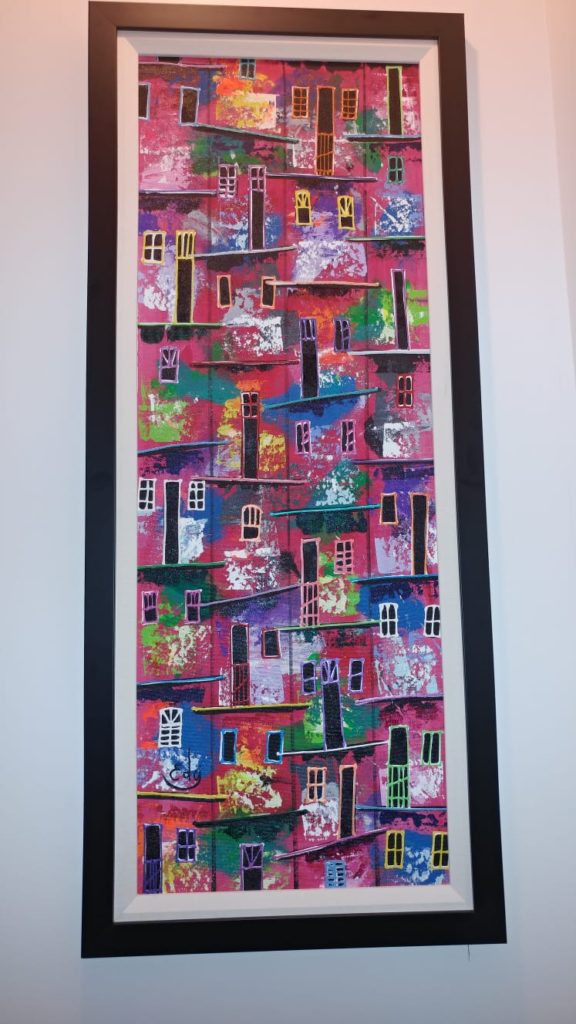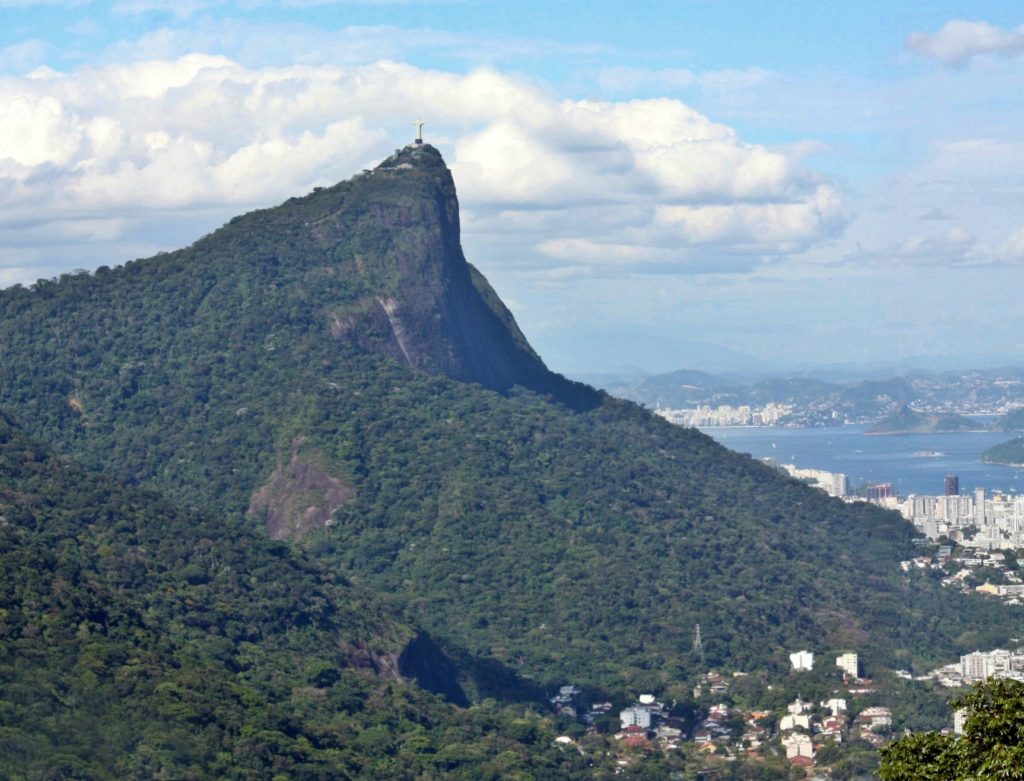At the end of the previous post, I noted that I’d initially considered calling it “The night of the singing cabbie.” Additional events of that evening led to another possible alternative title for that post. I’ve already mentioned the market in the median of Avenida Atlântica and at some time during our strolls there, I’d seen one or two vendors offering a hat I might want to buy. So before going to bed that night, I set off in search of a hat.
I walked among the vendors on the median. I examined the goods of the vendors along the beach and at neither did I see a hat that appealed to me. However, as I trod in the direction of the hotel one other stall caught my eye. I looked at a number of items and was set to purchase one but realized it would be far too big for my luggage and chose one of a more appropriate size.
It’s an original oil painting that was unframed when I bought it so I could easily roll it up and find a spot in my carry-on bag where it fit and would remain undamaged. Thus, the title of the previous post might also have been, “The night I went out to buy a hat and bought a painting instead.”
Corcovado.
While our brief stay in Rio de Janeiro will be far from a complete exploration of the city, it seems to me that no visit to the Cidade Maravilhosa (Marvelous City) should be considered without ascending Morro de Corcovado not merely to take in its dramatic urban panoramas but to get a close look at Cristo Redentor – perhaps the most iconic man-made landmark in South America’s third largest metropolis.
Humans have such a particular talent and inclination for seeing patterns and images where none might exist that there’s a word for it – pareidolia. In this current telling, we saw the first evidence of that in the naming of Pão de Açúcar for its perceived resemblance to a sugar loaf. We see that inclination again in naming the 710-meter-high Corcovado.
[Photo from Wikimedia Commons beckstei, CC BY 3.0.]
Perhaps in reference to the third temptation of Christ as described in the Book of Luke, the early Portuguese settlers called the peak Pináculo da Tentação (Pinnacle of Temptation). Over time, people saw a different pattern – the image of a hunchback (I don’t) and the mountain’s name changed to Corcovado. Of course, at the present time the visual impact of this sharply rising vertical peak is intensified by the largest art deco statue in the world, the 30-meter-tall Christ the Redeemer.
The idea for a Christian monument of some kind atop Corcovado had its genesis in the mind of Father Pedro Maria Boss sometime in the 1850s but the local authorities never approved it. Boss then turned to Brazil’s Princess Isabel. (Recall that the Portuguese royal family, fleeing Napoléon, moved the country’s capital to Rio in 1808.) Implying that she had inspired the idea and that the monument would honor her, Boss suggested she provide the funds. Her response was singularly unenthusiastic and the project seemed to have died.
However, the Roman Catholic archdiocese of Rio de Janeiro resurrected Boss’ idea in 1921 when it proposed erecting a statue of Christ on the summit because, at that time, it would be visible from anywhere in the city. (Though still visible from much of the city, this is no longer the case because of Rio’s growth.)
Unlike the Eiffel Tower, this second proposed Corcovado statue was welcomed by the Cariocas. In fact, a large enough group of citizens presented a petition to President Epitácio Pessoa that he had little choice but to approve it. A ceremonial foundation stone was laid on 4 April 1922. This was, not coincidentally, the centennial of Brazil’s independence from Portugal.
Later that year, Rio held a competition to name a designer and the award went to Heitor da Silva Costa – a Brazilian engineer. The project was to be privately funded with the bulk of the money to be raised by the Rio diocese of the Catholic church. It required nearly five years to amass enough money to assure the project’s completion.
I’ll return to discussing the construction in a moment but, although this is a newly shortened post, I still think your eyes could use a break. So, here’s a little eight minute video of the Trem do Corcovado – one of the three ways (the others being by the official van or by hiking) to reach the top of the mountain.
We four used the train.
Note: In keeping with my 2022-2023 reformation of the blog into shorter entries, backdated to maintain their sequence, any comments on this post might pertain to its new configuration. See the full explanation in the post Conventions and Conversions.


thanks for the musical ending. love stan getz on the jobim recording, and blossom dearie is an under-rated treasure.
You’re welcome. In my ears, music is essential.